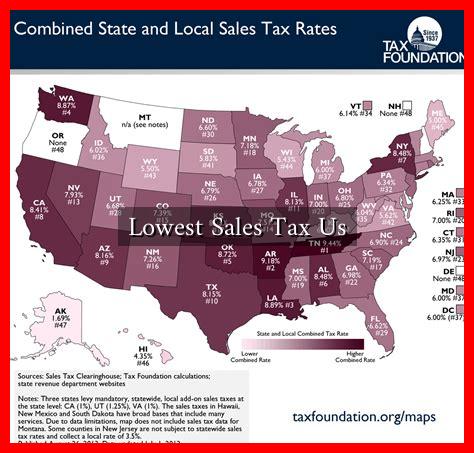-
Table of Contents
Understanding the Lowest Sales Tax in the U.S.
Sales tax is a crucial source of revenue for state and local governments in the United States. However, the rates can vary significantly from one state to another, impacting consumers and businesses alike. This article explores the states with the lowest sales tax rates, the implications of these rates, and how they affect economic activity.
What is Sales Tax?
Sales tax is a consumption tax imposed by the government on the sale of goods and services. It is typically calculated as a percentage of the purchase price and is collected by retailers at the point of sale. The revenue generated from sales tax is used to fund various public services, including education, infrastructure, and public safety.
States with the Lowest Sales Tax Rates
As of 2023, several states stand out for their low sales tax rates.
. Here are the states with the lowest base sales tax rates:
- Delaware: 0% – Delaware is unique in that it does not impose a sales tax at all, making it a popular destination for shoppers.
- Montana: 0% – Like Delaware, Montana does not have a statewide sales tax, although some localities may impose their own taxes.
- New Hampshire: 0% – New Hampshire also has no sales tax, which attracts consumers from neighboring states.
- Oregon: 0% – Oregon is another state without a sales tax, relying on income and property taxes instead.
- Colorado: 2.9% – Colorado has a low state sales tax rate, but local jurisdictions can add their own taxes, leading to varying rates across the state.
The Impact of Low Sales Tax Rates
Low sales tax rates can have several implications for both consumers and businesses:
- Consumer Behavior: States with no sales tax often attract shoppers from neighboring states, boosting local economies. For example, Delaware’s lack of sales tax has made it a shopping hub for residents of Pennsylvania and New Jersey.
- Business Attraction: Low sales tax rates can be a significant factor in attracting businesses. Companies may choose to set up operations in states with lower tax burdens, which can lead to job creation and economic growth.
- Revenue Generation: While low sales tax rates can benefit consumers, they may also lead to budget shortfalls for state governments. States without sales tax must rely more heavily on income and property taxes, which can be less stable sources of revenue.
Case Studies: The Effects of Low Sales Tax
Several states provide interesting case studies on the effects of low sales tax rates:
- Delaware: The absence of sales tax has made Delaware a prime location for retail businesses. The state has seen a steady influx of shoppers from neighboring states, which has helped sustain its economy.
- New Hampshire: New Hampshire’s lack of sales tax has led to a thriving retail sector, particularly in border towns where residents from Massachusetts come to shop.
- Colorado: While Colorado has a low state sales tax, the ability of local governments to impose additional taxes has created a patchwork of rates. This has led to some confusion among consumers and businesses but has also allowed localities to fund essential services.
Conclusion
Understanding the dynamics of sales tax in the United States is essential for consumers and businesses alike. States with the lowest sales tax rates, such as Delaware, Montana, New Hampshire, and Oregon, offer unique advantages that can stimulate economic activity and attract shoppers. However, these benefits must be balanced against the potential for revenue shortfalls that can impact public services. As states continue to navigate their tax policies, the implications of sales tax rates will remain a critical area of focus for policymakers and citizens alike.
For more information on sales tax rates across the United States, you can visit the Federation of Tax Administrators.





